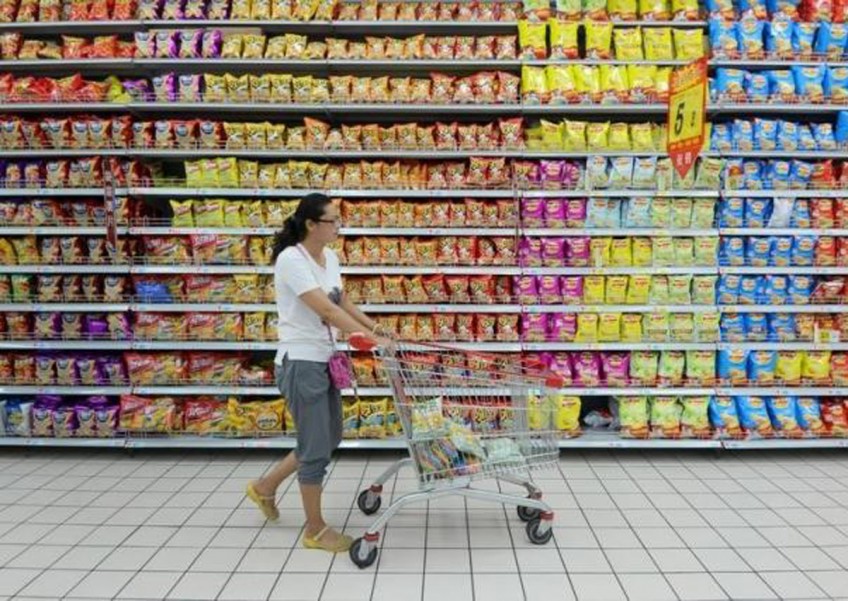China third-quarter growth seen falling to 6.8 per cent, weakest since 2009

BEIJING - China's economic growth is expected to fall below 7 per cent for the first time since the global financial crisis in the third quarter, putting pressure on policymakers to roll out more support measures as fears of a sharper slowdown spook investors.
Chinese leaders have been trying to reassure global markets that Beijing is able to manage the world's second-largest economy after a shock devaluation of the yuan CNY=CFXS and a summer stock market plunge fanned fears of a hard landing.
But even the government concedes the economy is entering a slower growth phase after decades of breakneck expansion.
Growth in third-quarter gross domestic product (GDP) likely slowed to 6.8 per cent from the same period last year, down from 7 per cent in the second quarter, according to a Reuters poll of 50 economists.
That would be the weakest pace of expansion since the first quarter of 2009, when it tumbled to 6.2 per cent, but far from an alarming loss of momentum.
The highest forecast in the poll was 7.2 per cent and the lowest was 6.4 per cent, though some investors fear current growth levels could already be much weaker than the official data will suggest.
"We expect the government to maintain loose monetary policy and step up fiscal spending in response to the economic slowdown," economists at China International Capital Corp (CICC), a domestic investment bank, said in a note.
"We believe that loosening measures may help cushion the slowing momentum in economic growth but it's difficult to reverse the long-term downward trend."
Instead of calming financial markets, a surprisingly resilient reading on Monday could reinforce scepticism about the reliability of Chinese official data. However, some economists believe government statistics may actually be underestimating consumption and strong service sector growth.
Despite weak exports and imports, industrial overcapacity and a property downturn, annual economic growth in the first two quarters was 7.0 per cent, in line with Beijing's full-year target, with the government rejecting suggestions that the figures were being inflated to meet official forecasts.
Sheng Laiyun, spokesman for the National Bureau of Statistics, said last month that third-quarter economic growth will be largely stable as the impact from the stock market slump on the broader economy has been limited.
The bureau has changed the way quarterly gross domestic product data is calculated, a move it calls a step to adopt international standards and improve the accuracy of Chinese numbers.
POLICY SUPPORT
China's policymakers think they can stem a rapid rundown of the country's foreign exchange reserves and ease pressure on the currency by pump-priming the economy to meet this year's growth target, sources involved in policy discussions say.
The CICC expects the central bank to deliver another 25-basis point (bps) cut in interest rates and two cuts in bank reserve ratios totaling 100 bps by year-end.
China's consumer inflation cooled more than expected in September while producer prices extended their slide to a 43rd straight month, highlighting the urgency for the central bank to tackle deflationary pressures.
The central bank has already cut interest rates five times since November, and reduced the amount of cash that banks must hold as reserves to spur activity, though some analysts say such moves have not been as effective as in the past when the economy was more tightly controlled and debt levels were much lower.
Other support measures have included more government spending on infrastructure and easing down payment requirements and other curbs on the cooling property sector, which have succeeded in reviving weak home sales and prices but have not yet reversed a sharp decline in new construction which is weighing on demand for materials from cement to steel.
MONTHLY DATA
A raft of monthly indicators will be released with the GDP
data, and analysts will be looking for signs as to whether momentum is still fading or if the economy may be slowly stabilizing.
Factory output likely grew 6.0 per cent in September from a year earlier, slowing from August's 6.1 per cent rise, as firms struggle to cope with persistent deflationary pressures due to overcapacity and softening demand.
Annual growth of fixed-asset investment, a crucial driver of China's economy, likely eased to 10.8 per cent in the first nine months of 2015 - the weakest expansion in nearly 15 years - from 10.9 per cent in January.
Annual retail sales growth was seen at 10.8 per cent in September, unchanged from August.
China's exports fell less than expected in September, with monthly figures showing recovery, but a sharper fall in imports left economists divided over whether the country's ailing trade sector is showing signs of turning around.